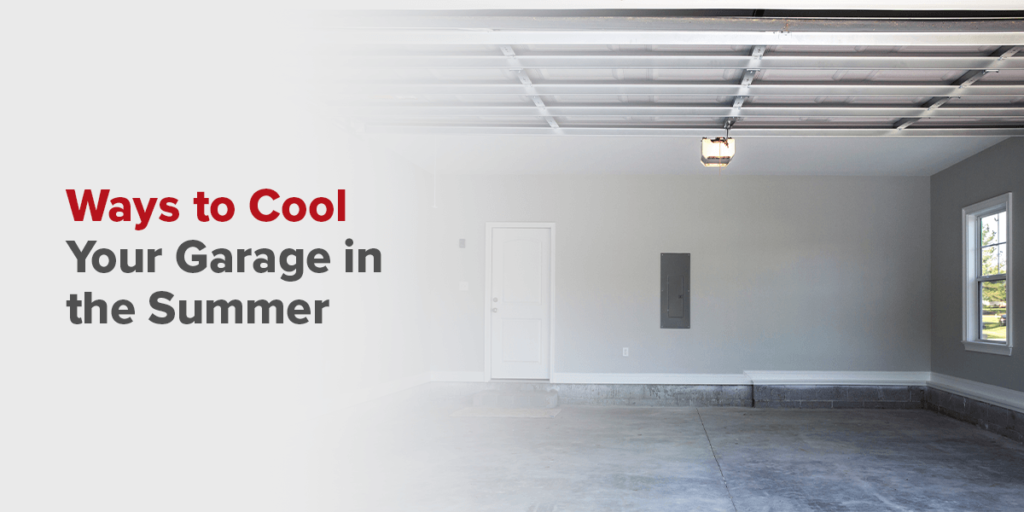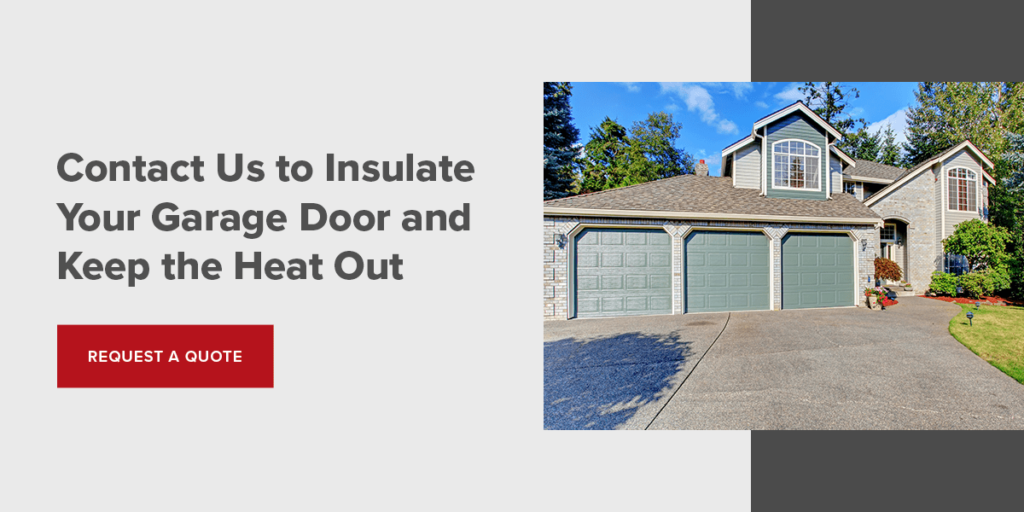
Why is my garage so hot? You step into your garage and you immediately start to sweat. While most garages get hot, there’s always a way to cool them off. Learn more below about why the temperature in your garage temperature rises so high and the best way to cool a garage in the summer.
Why Do Garages Get So Hot in the Summer?
Summers everywhere can get hot and humid, turning the garage into an uncomfortable place. Trying to work out how to cool a garage in Oregon can be difficult. There are two main reasons garages feel like saunas in the summer. The first is a lack of ventilation and the second is the lack of insulation.
That said, other factors can play into the problem, as well. If your garage is full of objects, built with concrete flooring or has lots of heat-generating vehicles and equipment, your garage might be holding onto more heat. Here are some common reasons your garage is getting hot in summer.
Lack of Insulation
Insulation is a main contributor to a hot garage — many garages have poor insulation or even no insulation at all. Without insulation, warm air seeps into the garage as the cold air escapes, meaning your garage can’t maintain a comfortable temperature level. This drives up your energy bill and makes your garage an uncomfortable place.
Insulating your garage keeps the heat out and will help lower your energy costs since your HVAC system won’t constantly be trying to maintain the climate level as the garage warms up. You can enjoy many benefits from adding insulation to your garage along with better temperature control, such as quieter opening and closing of the door as well as better protection to items stored in the space.
Often, garages have cracks and gaps around the doors that let heat enter. Air sneaks in through these gaps, warming and cooling the garage with the outdoor temperatures. If left unsealed, these garage door gaps could also let in water, animals and wind, ruining items stored in the garage and causing damage.
Lack of Ventilation
Lack of ventilation is a common problem, especially since many garages don’t have windows. Without air circulation, the garage will feel hot and stuffy. A soft breeze can lower the temperature slightly and make the space feel more comfortable. The most effective way to increase ventilation is to remove the hot air through a turbine or mechanical system.
Location and Color
The location of your garage makes a difference. A south- or west-facing garage gets more sunlight during the hottest part of the day, heating it up even more. If your garage cannot remove this heat, it will only get hotter as the day goes on.
Garage color can also affect its internal temperature — darker-colored garages often absorb more sunlight. Lighter colors can help reflect light, preventing it from absorbing into your garage.
Heat-Generating Objects
Finally, parking your car inside the garage right after you drive can increase the temperature inside the garage. While your vehicle is running or the engine is hot, heat is released into the surrounding area. This can take a garage from comfortable to uncomfortable quickly.
Any electric or gas equipment used in the garage will also release heat. Running tools, washing machines, dryers and other equipment can increase your garage’s heat as they operate. Along with these, too many garage objects will contribute to heat retention. Things piled up inside the garage block airflow and keep air stagnant and warm.

Garage Cooling Solutions
No one likes a too-hot garage — get the most out of your space by lowering the garage temperature. If you’re wondering how to cool your garage down and keep it that way, check out these tips:
Park Your Car Outside
If you recently drove your car, it’s recommended to park it outside the garage. The car will be hot from the recent driving and can cool down outside faster than inside. If left in the garage, the heat from the engine will increase the garage temperature, while the hot garage will slow down the engine cooling, creating a stuffy, warm atmosphere.
Use Garage Ventilation Systems
The simplest ventilation option for a garage is windows. There are many pros to garage windows — opening them will let in the fresh air, which can circulate throughout the space. Tinted and UV-protective windows can also help reduce the amount of light and heat entering your garage.
Passive ventilation systems are a standard method for keeping garages cool. They often consist of a turbine roof or wall vent, which uses natural winds to help circulate air through the garage.
Active ventilation systems mechanically circulate garage air. These are either separate or integrated with the entire house’s ventilation system. They’re more expensive, so they work best for people who spend lots of time in the garage.
Leave the Garage Open for a Few Hours
If you don’t have windows in your garage, another option is to leave the garage door open for a few hours when you want to lower the temperature. This is only recommended if you’re going to be home at the time. Do not leave your garage open and unattended if you plan to leave your home.
Circulate Air In Your Garage
Install a ceiling fan or air conditioner in your garage. If you go with a fan, choose a fan with industrial strength. You’ll need one with strong blades that can withstand debris dropped in a space, such as sawdust from home improvement projects.
You can choose to get a ceiling fan to help cool the garage, or you can install several fans along the sides of the garage ceiling for more circulation. Fans work best when they pull and push air inside and outside to create a flow, so place fans near vents and open windows if possible.
Adding an air conditioning unit is the quickest way to lower your garage’s temperature. You can also use a portable air conditioner, but make sure you take measurements and select the correct size.
Upgrade Your Garage Insulation
Installing insulation can help ensure your garage is cooler in the summer and retains heat during the winter. Insulate your garage door and walls to keep the heat out and reduce the garage temperature. Installing new insulation or getting a new, insulated garage door can help reduce your energy costs by lowering the amount of work your HVAC system needs to do.
Proper insulation and weatherstripping are essential to protecting your garage from extreme temperatures and weather damage. Preventing the elements from entering the garage protects your space from heat, cold, animals and water damage, so your garage stays secure year-round.
Contact Us to Insulate Your Garage Door and Keep the Heat Out
Let Oregon City Garage Door assist you! If you’re in the Portland, OR, metro area and are looking for garage door installation or your overhead door needs repair, contact us online to request a quote today and stop asking why your garage is so hot in the summer. We have been trusted for reliable garage door service in numerous counties and cities in Portland, including Beavercreek, Beaverton, Canby, Clackamas, Happy Valley, Tualatin, Tigard and more!
- Best Type of Garage Door for a Pole Barn Garage - May 22, 2024
- How to Remove Rust From a Garage Door - May 8, 2024
- How to Build a Pole Barn Garage - May 8, 2024

